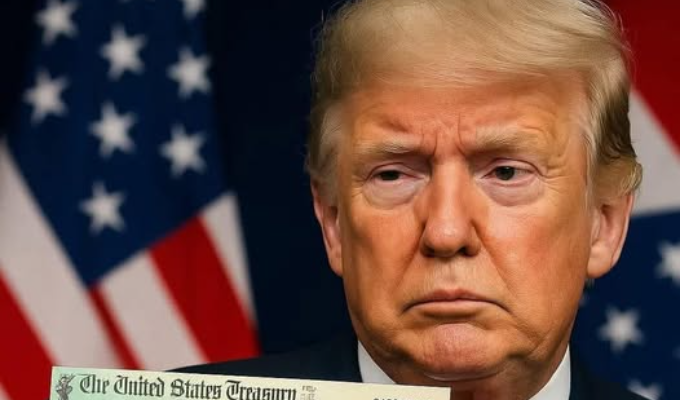Former President Donald Trump has proposed issuing direct payments of up to $2,000 to American households, framing the idea as a “dividend” funded entirely by the federal government’s newly expanded tariff system. While the concept immediately sparked debate across political and economic circles, Trump emphasized that the goal is to return a portion of the revenue generated from foreign imports directly to U.S. families still grappling with inflation and lingering economic pressures.
The proposal hinges on a sweeping tariff structure the United States began implementing in April 2025. These tariffs target countries with significant trade imbalances and apply fees across a wide range of imported goods. According to the Treasury Department, the measures were designed to boost federal revenue while encouraging more domestic production. In just the first several months of the program, the government has collected more than $214 billion—a figure supporters cite as evidence of the program’s early success.
Trump, now 79, has repeatedly argued that the tariff plan will only grow more lucrative as it matures. He has suggested that once the system is fully operational, annual revenue could surpass $1 trillion. “They are just starting to kick in,” he said. “Ultimately, your tariffs are going to be over a trillion dollars a year.” He added that the bulk of that money would be dedicated to reducing the national debt, which currently stands at roughly $37 trillion.

Still, Trump has signaled that he wants a portion of the tariff windfall to directly benefit the American public. During recent remarks, he floated the idea of cash payments in the range of $1,000 to $2,000. He described the concept as “a dividend to the people of America,” framing it as a reward for the country’s collective economic strength and the burden U.S. consumers bear in the form of higher prices on imported goods. The payments, he argued, would help families still struggling with elevated costs that persist years after the COVID-19 pandemic disrupted supply chains and drove inflation to record highs.
Despite its populist appeal, the plan faces significant hurdles. Any direct payments—like the stimulus checks issued during the pandemic—would require congressional approval. Lawmakers would need to agree not only on the size and distribution of the checks but also on whether tariff revenue should be used for household payments rather than debt reduction or other federal programs. Critics have also raised concerns that tariffs, while generating revenue, can act as a hidden tax on consumers by increasing the prices of everyday goods.
Supporters of the proposal counter that the payments would effectively offset those higher prices, returning revenue to the very people who absorbed the costs. They argue that, unlike traditional stimulus packages that rely on federal borrowing, this approach uses money already collected.
Whether Trump’s “American dividend” becomes a centerpiece of future economic policy remains uncertain. For now, the proposal has opened a fresh debate about how tariff revenue should be used—and whether direct payments funded by foreign imports could become a new kind of economic relief for American households.



